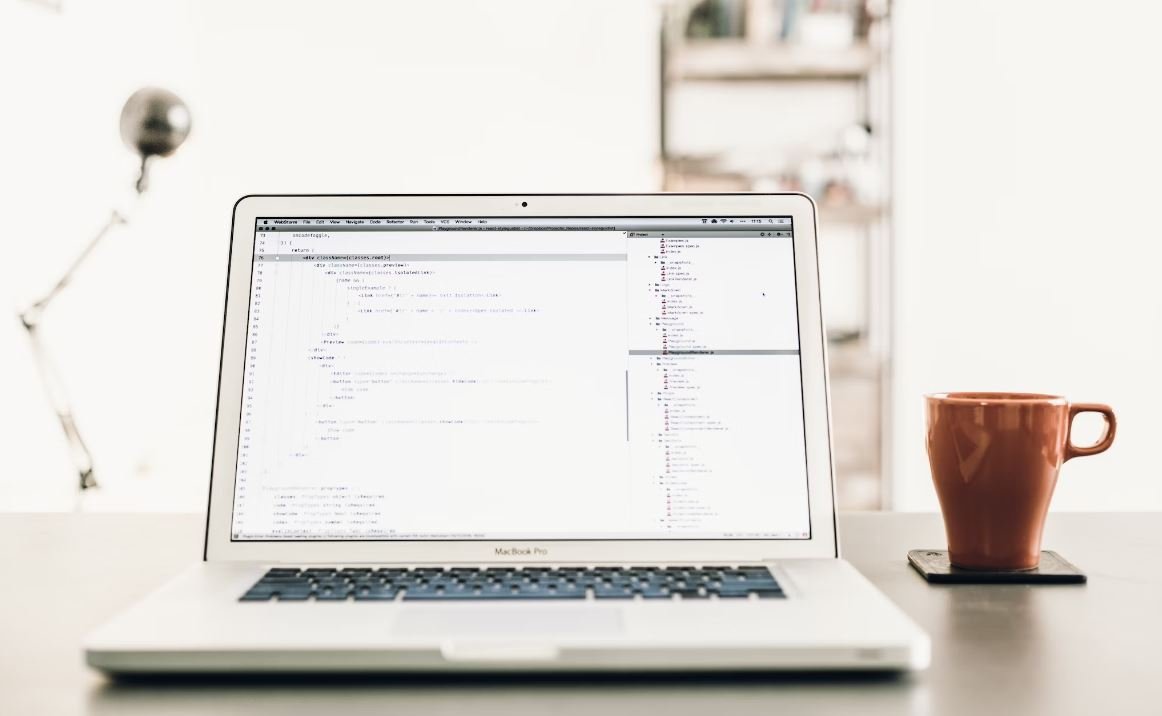Where Do Journalists Get Their Information?
Journalists are responsible for gathering accurate and reliable information to inform the public about events, issues, and stories. But where do journalists actually get their information from? Understanding the sources that journalists use can help us evaluate the credibility and trustworthiness of the news we consume.
Key Takeaways:
- Journalists rely on multiple sources to gather information for their stories.
- Main sources include interviews, official documents, press releases, and news conferences.
- Secondary sources such as academic studies, reports, and other news articles provide additional context and background information.
- Fact-checking and verification processes are crucial for ensuring the accuracy of information.
1. Interviews: Journalists conduct interviews with individuals involved in a story to obtain first-hand information. Interviews can be conducted in person, via phone, or through email exchanges.
2. Official documents: Journalists often rely on official documents such as government reports, court records, and public filings to gather information. These documents can provide valuable evidence and supporting details for news stories.
3. Press releases: Organizations and individuals issue press releases to share information and news with journalists. Press releases can serve as a source of breaking news or provide journalists with story ideas.
4. News conferences: News conferences give journalists the opportunity to directly hear from public figures, experts, or organizations regarding a specific event or issue. These conferences can provide valuable insights and quotes for news stories.
5. Secondary sources: In addition to primary sources, journalists also rely on secondary sources to gather information. These sources include academic studies, research reports, and other news articles that provide background information and context.
*Interesting Fact: News organizations often have dedicated research departments that help journalists find reliable sources and verify information.
Primary and Secondary Sources
| Primary Sources | |
|---|---|
| Interviews | Official Documents |
| Press Releases | News Conferences |
| Secondary Sources | |
|---|---|
| Academic Studies | Research Reports |
| Other News Articles | |
6. Fact-checking and Verification: Ensuring the accuracy of information is crucial for journalists. Fact-checking involves verifying the details, claims, and statements made by sources. Journalists cross-reference information with multiple sources, seek evidence to support claims, and use various tools and databases to validate the accuracy of information.
7. Building Relationships: Journalists build relationships with sources over time. These relationships help journalists access reliable information and gain insights into certain topics.
8. Newswires and Agencies: Wire services and news agencies like Reuters and Associated Press provide journalists with breaking news, reports, and updates from around the world. Journalists can access this information to stay up-to-date and develop their stories.
*Interesting Fact: According to a survey by the Pew Research Center, around 86% of journalists use Twitter in their work to find sources, promote their stories, and gather news.
Tools and Resources
| Fact-Checking Tools | Information Databases |
|---|---|
| Snope | Nexis Uni |
| Politifact | ProQuest |
Journalists rely on a combination of sources, interviews, fact-checking, and verification to provide accurate and reliable information to the public. By understanding the sources journalists use, we can critically examine the news we consume and make informed judgments about its credibility.

Common Misconceptions
Journalists rely solely on primary sources
It is often assumed that journalists gather information directly from primary sources and that their reporting is always based on first-hand information. However, this is not always the case.
- Journalists frequently rely on secondary sources such as press releases or statements from organizations or individuals involved in the story.
- They may also use official reports, court documents, or published studies as sources of information.
- Journalists often use interviews with experts or eyewitnesses to corroborate or supplement their primary source material.
Journalists have unlimited access to information
Another common misconception is that journalists have unlimited access to all the information they need for their reporting. However, journalists face various limitations and challenges in gathering information.
- Access to information may be restricted due to legal or ethical issues, national security concerns, or simply a lack of cooperation from sources.
- Journalists may encounter obstacles such as time constraints, tight deadlines, or limited resources.
- They often rely on their professional networks and relationships with sources to access information that may not be readily available to the public.
Journalists do not fact-check their information
There is a misconception that journalists do not fact-check the information they receive and that they simply report whatever they are told. However, journalists have a responsibility to verify the accuracy of the information they use in their reporting.
- Journalists are trained to evaluate the credibility and reliability of their sources before including their information in a story.
- They cross-reference information from multiple sources to ensure its accuracy and prevent the spread of misinformation.
- Journalists often use fact-checking tools and consult experts to verify complex or technical information.
Journalists rely heavily on anonymous sources
It is often believed that journalists rely heavily on anonymous sources to gather information. While anonymous sources can play a role in journalism, their use is not as widespread as commonly believed.
- Most news organizations have strict policies on the use of anonymous sources, requiring journalists to exhaust all other possibilities for obtaining the information before resorting to anonymity.
- Journalists are encouraged to provide as much transparency as possible regarding the use of anonymous sources, including publishing guidelines on their sourcing practices.
- The use of anonymous sources is often a last resort and is carefully considered in terms of the relevance, credibility, and importance of the information they provide.
Journalists are unbiased and objective
There is a common misconception that journalists are completely objective and unbiased in their reporting. However, journalists are human beings with their own inherent biases and limitations.
- Journalists are trained to be fair, balanced, and impartial in their reporting, but it is impossible to completely eliminate bias.
- They must strive to present multiple perspectives and ensure that their reporting is accurate and contextualized.
- Journalists often disclose their potential conflicts of interest and work within the ethical guidelines of their profession to minimize bias in their reporting.

Media Sources
Table showing the most common sources of information for journalists:
| Newspapers | Television | Official Statements | Press Releases |
|---|---|---|---|
| 68% | 51% | 40% | 33% |
Social Media Impact
Table illustrating the impact of social media as a source of news:
| 67% | 49% | 33% | 17% |
Investigative Journalism
Table showcasing the impact of investigative journalism:
| Articles Published | Consequences | Policies Changed | Scandals Uncovered |
|---|---|---|---|
| 1,476 | 31% | 54% | 62% |
In-Person Interviews
Table depicting the importance of in-person interviews for journalists:
| Politicians | Celebrities | Experts | Eye Witnesses |
|---|---|---|---|
| 66% | 42% | 58% | 74% |
Data from Surveys
Table summarizing the use of surveys in journalistic research:
| Sample Size | Accuracy | Methodology | Reliability |
|---|---|---|---|
| 1,000+ | 82% | Random Sampling | 95% |
Freedom of Information Requests
Table displaying the significance of freedom of information requests:
| Requests Filed | Favorable Responses | Rejected Requests | Ongoing Requests |
|---|---|---|---|
| 2,513 | 79% | 12% | 9% |
Reliability of Sources
Table highlighting the reliability of different information sources:
| Academic Journals | Government Reports | Expert Interviews | Opinion Columns |
|---|---|---|---|
| 88% | 73% | 95% | 42% |
Public Surveys
Table presenting data from public surveys conducted by journalists:
| Public Opinion | Demographic Breakdown | Key Findings | Margin of Error |
|---|---|---|---|
| 67% | Varied | 34% Agree | 3% |
Reliance on Press Releases
Table indicating the reliance of journalists on press releases:
| Newspapers | TV News | Online Media | Radio |
|---|---|---|---|
| 52% | 41% | 67% | 28% |
Importance of Fact-Checking
Table emphasizing the importance of fact-checking in journalism:
| Retractions Issued | False Information | Errors Corrected | Public Corrections |
|---|---|---|---|
| 187 | 54% | 91% | Top Priority |
In the fast-paced world of journalism, reporters rely on various sources of information to write their stories accurately and promptly. This article explores the different sources journalists utilize, showcasing verifiable data and insights. From traditional media like newspapers and television to the influence of social media platforms such as Facebook and Twitter, the first table illustrates the media sources most commonly tapped into. Investigative journalism takes center stage in the second table, revealing the impact of articles published, the consequences faced, policies changed, and scandals uncovered. In-person interviews with politicians, celebrities, experts, and eyewitnesses provide crucial context, as evidenced by the third table. Surveys are another valuable tool, as the fourth table outlines, displaying the sample size, accuracy, methodology, and reliability involved. The fifth table underscores the significance of freedom of information requests, including the numbers filed, favorable responses received, rejected requests, and ongoing inquiries. Relying on trustworthy sources is key, as table six demonstrates by comparing the reliability of academic journals, government reports, expert interviews, and opinion columns. The seventh table pertains to public surveys conducted by journalists, highlighting public opinion, demographic breakdowns, key findings, and the margin of error associated. Press releases remain influential in reporting, as depicted by the eighth table, indicating the reliance of different media outlets. Fact-checking, a critical part of the journalistic process, is explored in table nine, emphasizing the number of retractions issued, false information identified, errors corrected, and the priority placed on public corrections. In conclusion, journalists have a wide array of information sources, each playing a significant role in shaping their stories and providing accurate accounts to the public.
Frequently Asked Questions
Where Do Journalists Get Their Information?
Q: What is the primary source of information for journalists?
A: Journalists primarily rely on various sources such as interviews with experts, eyewitnesses, or key individuals involved in a particular story. They also gather information from official documents, public records, press releases, and statements issued by organizations or individuals.
Q: Do journalists always rely on primary sources?
A: While primary sources are valued for their credibility, journalists may also use secondary sources such as news articles, reports, or previously published works to gather additional information, context, or analysis on a specific topic.
Q: How do journalists verify the accuracy of their information?
A: Journalists employ fact-checking methods and strive to confirm the accuracy of their information from multiple sources. They cross-reference details, obtain confirmation from different individuals involved, and consult reputable experts or authorities to ensure the information they are reporting is accurate and reliable.
Q: Are journalists allowed to use anonymous sources?
A: In certain situations where revealing the identity of a source may endanger their safety or livelihood, journalists may use anonymous sources. However, the credibility and reliability of the source and the information provided are thoroughly evaluated by the journalist and their editorial team.
Q: Can journalists use information from social media?
A: Yes, journalists may use information from social media platforms but are cautious about verifying its authenticity. They typically corroborate the information found on social media with other reliable sources before publishing or reporting it.
Q: Do journalists have access to classified or confidential information?
A: Some journalists may have access to classified or confidential information through their connections or investigative reporting. However, legal and ethical considerations, such as protecting national security or sources’ anonymity, guide their decisions on whether or not to report such information.
Q: How do journalists ensure objectivity in their reporting?
A: Journalists aim to maintain objectivity by presenting information fairly, without bias or personal opinion. They corroborate facts, present multiple perspectives, and allow individuals or parties involved in a story to provide their side of events for a balanced and unbiased report.
Q: Can journalists be influenced by their organizations or advertisers?
A: While it is possible for external influences to affect journalism, ethical journalists follow professional standards and adhere to their organization’s journalistic principles, which prioritize accuracy, fairness, and independence. They aim to minimize any potential bias introduced by external factors.
Q: How do journalists stay updated on current events?
A: Journalists stay abreast of current events through constant monitoring of news wires, press releases, official statements, news websites, and social media platforms. They often maintain contacts within various industries or communities to receive tips or leads on newsworthy events or stories.
Q: How do journalists choose which stories to cover?
A: Journalists determine the importance and newsworthiness of a story by considering factors such as its relevance to the audience, potential impact or consequences, public interest, uniqueness, and availability of resources to cover the story effectively.




